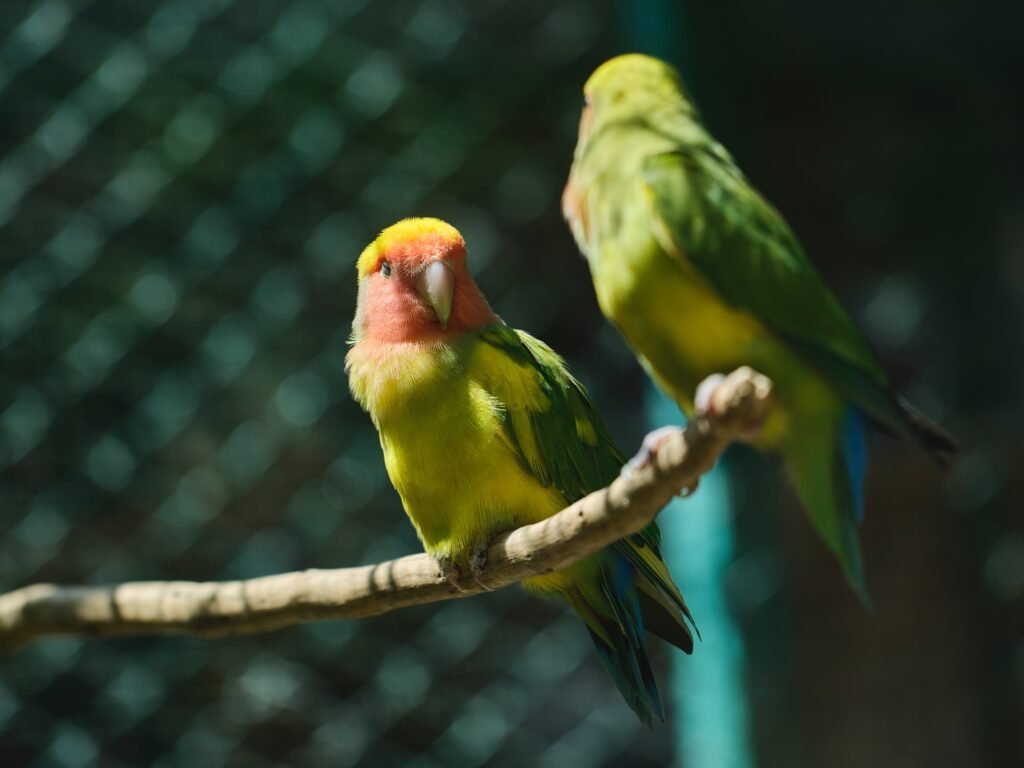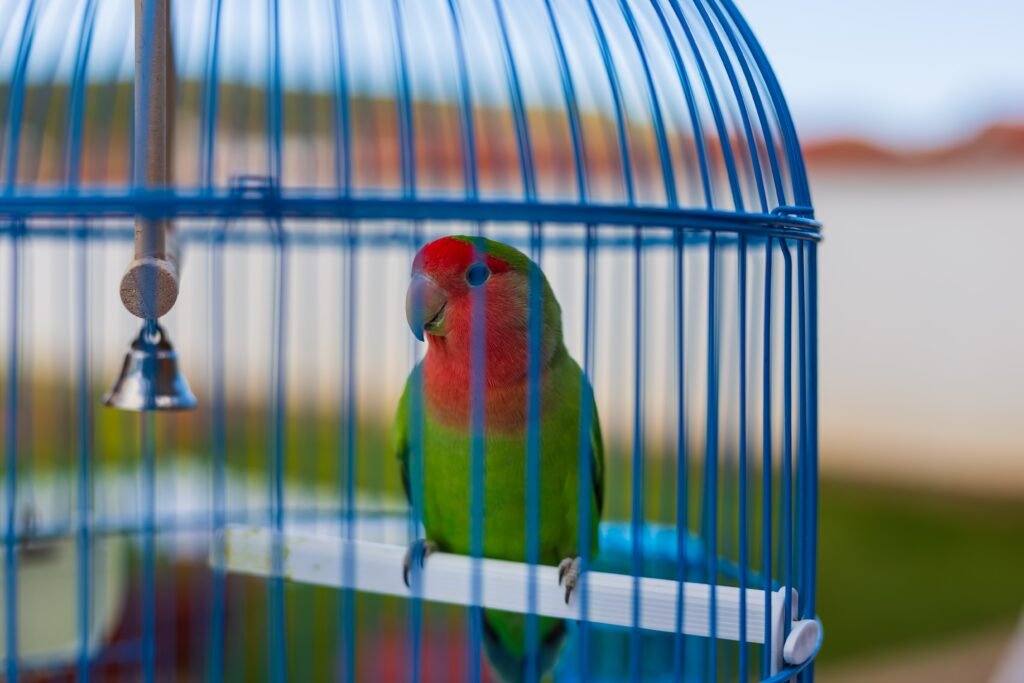Lovebirds are beautiful and intelligent birds that make wonderful pets for bird enthusiasts. If you are considering getting lovebirds or are simply curious about their breeding habits, one common question that arises is: How many eggs do lovebirds lay at a time? In this article, we will explore the fascinating world of lovebird reproduction and shed light on this intriguing question.
Understanding Lovebird Breeding Behavior
Lovebirds are known for their monogamous nature, meaning they form long-term pair bonds with their mates. Once a pair has formed, they engage in courtship rituals that involve mutual preening, feeding each other, and displaying affectionate behavior.
Lovebirds are highly social birds, and this is reflected in their breeding behavior. They form strong pair bonds that can last a lifetime. These bonds are essential for successful breeding and the production of eggs. Lovebirds engage in courtship rituals that involve various behaviors such as mutual preening, feeding each other, and displaying affectionate behavior. These rituals help strengthen the bond between the pair and prepare them for the breeding process.
The Egg-Laying Process
After successful courtship and mating, female lovebirds will begin the egg-laying process. Lovebird eggs are laid in a specific area known as a nest box. These nest boxes should be provided in the aviary or cage to create a suitable environment for breeding. Lovebirds typically prefer dark and cozy nest boxes made of wood or other suitable materials.
The female lovebird will lay one egg every other day until she completes her clutch. The clutch refers to the total number of eggs laid during a single breeding cycle. The number of eggs in a clutch can vary depending on the species of lovebird, with some species laying as few as three or four eggs, while others can lay up to eight or more.
It is important to note that not all eggs in a clutch will necessarily be fertile. Lovebirds, like many other birds, do not start incubating their eggs immediately after laying them. They wait until they have laid a certain number of eggs before they begin incubation. This ensures that all the eggs in the clutch develop and hatch at roughly the same time.
Factors Affecting Egg Production
Several factors can influence the number of eggs laid by a lovebird pair. These include:
Health and Age
The overall health and age of the lovebirds play a crucial role in determining the number of eggs laid. Younger and healthier lovebirds are more likely to produce a larger clutch compared to older or unhealthy birds. It is important to provide lovebirds with a balanced and nutritious diet, regular exercise, and proper veterinary care to ensure their overall health and well-being.
Diet and Nutrition
A balanced and nutritious diet is essential for optimal egg production in lovebirds. Providing a varied diet that includes fresh fruits, vegetables, seeds, and pellets ensures that the lovebirds receive all the necessary nutrients to support egg production. It is important to consult with avian experts or veterinarians to determine the specific dietary needs of your lovebirds and ensure they receive the appropriate nutrition.
Environmental Conditions
Lovebirds require a stable and comfortable environment to lay eggs successfully. Factors such as temperature, humidity, and lighting can impact their breeding behavior. It is important to provide a consistent and appropriate environment to encourage egg-laying. The nest box should be placed in a quiet and secluded area to provide privacy for the lovebirds. The temperature should be kept within a suitable range, typically between 70-80 degrees Fahrenheit. Additionally, providing a consistent light-dark cycle can help regulate their reproductive hormones and promote egg-laying.
Pair Bond
The strength of the pair bond between the lovebirds also plays a role in egg production. A strong and harmonious bond between the male and female increases the chances of successful breeding and a larger clutch size. It is important to ensure that the lovebirds are compatible and have formed a strong bond before attempting to breed them. This can be achieved by allowing them to spend sufficient time together, observing their behavior, and ensuring they have compatible personalities.
Incubation and Hatching
Once the female lovebird has completed laying all the eggs in her clutch, she will begin the incubation process. Lovebirds take turns sitting on the eggs to keep them warm and ensure their proper development. The incubation period typically lasts between 21 to 25 days.
During incubation, the lovebird parents diligently rotate the eggs to ensure even heat distribution and prevent any potential damage to the developing embryos. The parents also provide warmth and protection to the eggs by sitting on them for extended periods.
After the incubation period, the eggs will start hatching, giving rise to adorable lovebird chicks. The hatching process can take a few hours to a couple of days, with the chicks breaking through the eggshell using a small egg tooth on their beaks. Lovebird parents will continue to care for and feed their chicks until they can fend for themselves. It is important to provide a safe and nurturing environment for the newly hatched chicks, including appropriate food, water, and suitable nesting materials.
Conclusion
Lovebirds are remarkable creatures that exhibit fascinating breeding behavior. The number of eggs a lovebird lays at a time depends on various factors such as species, health, diet, and environmental conditions. By providing a suitable environment and ensuring proper care, you can encourage lovebirds to breed and lay a healthy clutch of eggs. If you are considering breeding lovebirds, it is important to do thorough research and consult with avian experts to ensure the well-being of these lovely birds and their offspring.
Please note that the information provided in this article is based on general knowledge about lovebirds and may vary between different species and individual birds. It is always best to consult with a professional avian expert for specific advice and guidance regarding lovebird breeding and care.
FAQ
Q: How many eggs do lovebirds lay at a time?
A: Female lovebirds typically lay one egg every other day until they complete their clutch. The number of eggs in a clutch can vary depending on the species of lovebird, with some species laying as few as three or four eggs, while others can lay up to eight or more.
Q: Are all the eggs in a lovebird clutch fertile?
A: Not all eggs in a lovebird clutch will necessarily be fertile. Lovebirds, like many other birds, do not start incubating their eggs immediately after laying them. They wait until they have laid a certain number of eggs before they begin incubation to ensure that all the eggs in the clutch develop and hatch at roughly the same time.
Q: What factors can affect the number of eggs laid by lovebirds?
A: Several factors can influence the number of eggs laid by a lovebird pair. These factors include the health and age of the lovebirds, their diet and nutrition, environmental conditions such as temperature and lighting, and the strength of the pair bond between the lovebirds.
Q: How long does it take for lovebird eggs to hatch?
A: The incubation period for lovebird eggs typically lasts between 21 to 25 days. During this time, the lovebird parents diligently rotate the eggs to ensure even heat distribution and prevent any potential damage to the developing embryos. After the incubation period, the eggs will start hatching, which can take a few hours to a couple of days.


